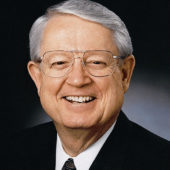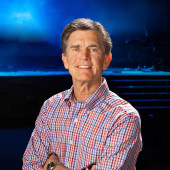Where Is Wisdom in the Library of Congress?
Erik paused on the balcony overlooking the Main Reading Room in the Library of Congress, Washington, D.C. He saw the statue representing religion and frowned.
“What is it about that statue that drove Great-Great, I-Don’t-Know-How-Many-Greats Grandpa Theodore to despair?” he muttered.
“Keep moving,” a docent said. “This is only a walk through. We don’t want people intimidating the scholars studying below.”
“Sorry,” Erik said. “Is there any way I can actually go into the reading room?”
Two hours later with a security pass around his neck, Erik stood on the floor of the Main Reading Room and gawked at the many statues and alcoves. The dome of the rotunda rises 160 feet above the floor.
“No wonder this was called a glorious national monument when it opened in 1897,” Erik thought.
Below the dome eight giant marble columns held 10-foot high, plaster, female figures, symbolizing civilized life.
Erik named the figures as he turned in a circle: Commerce, History, Art, Philosophy, Poetry, Law, Science.
“And Religion,” he said aloud.
“Do you like our Religion statue,” a voice asked. As he spun around, a smiling lady added, “I’m Susan Frank, a resource librarian here. Can I help you find something?”
“Hello. I’m Erik Baur,” he said. “I doubt you’ll find what I’m seeking even though I’ve read that you have 150 million items here.”
“Try me,” Susan said.
“OK, what do you know about the sculptures?” Erik asked.
“The eight sculptures were done by various artists,” Susan said. “Can you see that Religion holds a flower in her hand? That flower represents all that we can learn about God in nature. The sculptor was Theodore Baur, a gifted artist, who came to North America from Germany in 1850. Is he your ancestor?”
Erik nodded before she continued, “He worked on the decorations of the Parliament Building in Ottawa, Canada. He designed the interiors of villas in New York and he also did the bronze statue of Beethoven. See it over there to your right?”
Erik stared at Beethoven and shook his head. “It’s not Beethoven,” he said. “I mean the Beethoven statue is not the problem.”
Susan raised her eyebrows. “Problem?”
“There was a problem with Theodore Baur and it had to do with Religion,” Erik said. “He’s a mysterious figure according to family lore.”
“Well, I’ve wondered about the discrepancies surrounding Baur’s death,” Susan said. “I’ve noticed that his date of death varies. Some accounts have him dying in 1894, but that doesn’t make any sense since he was working here at that time. Other accounts have him returning to Germany in 1902 and disappearing.”
“He did return to Germany as a broken man, but why?” Erik said. “We know he went into seclusion for awhile. Do you have any more information on him?”
Susan chewed her lip, hurried off, and finally returned with an old journal. “This might be helpful,” she said with a knowing grin. “It’s the diary of T. Baur, written in German while he worked here. He left it with a fellow sculptor, John Donoghue, who sculpted our Science statue. When Donoghue died a few years later, this journal went into a box in our archives. You may not take the journal out of this room, but you may read it here.”
Grateful for his German background, Erik began to page through Baur’s hand-written journal. Erik was humbled to think that his great . . . grandpa had penned it and he began to translate the final page of the journal:
I have helped to make this beautiful and symbolic building that houses the wisdom of the world. I am a sought-after sculptor on many fronts. I have money and fame, but still I am empty. I can’t find God, at least, a God that will love me for who I am. The beautiful statue I created for Religion only points to nature. God is not nature. This building has knowledge portrayed in every nook and cranny, but where is God? Even the beautiful Bible passage above Religion puzzles me.
Erik jerked his head upward, surprised to see a passage on a plaque several feet above Religion. He read, “What doth the LORD require of thee, but to do justly, to love mercy, and to walk humbly with thy God.” Micah 6:8
Erik returned to the journal:
Even when I try to apply the Bible passage, I only see the impossible demands of God. I am incapable of doing justly, loving mercy, and walking humbly. Those ideals are out of my reach. My friend, John Donoghue, says that this should not haunt me, but it does. I must return to my beloved Germany to study and find the truth. Farewell.
When Erik turned the last page, a yellowed letter fluttered to the floor. Carefully Erik picked it up and opened it. The handwriting was the same.
Dear John,
I have discovered that God is found by reading the Bible. At first, I just studied the book of Micah. There I learned that a Savior was prophesied to be born in Bethlehem. After that I searched for Bethlehem in the Bible and found that Jesus was born there. Did you know his birth was a miracle? Did you know he performed miracles? And did you know Jesus died for our sin and rose from the dead? Both miracles. Suddenly, I knew I was loved by a God who could and did forgive my sins. I have faith in him who will give me strength to praise him with my life, which includes doing justly, loving mercy, and walking humbly. The best part is God will take me to paradise. I hope I will see you there.
Your Friend,
Theodore
Erik looked up, feeling at peace. Susan approached and asked, “Did you find your answer?”
“I did,” Erik said. “Great . . . Grandpa may have returned to Germany a broken man, but he died a triumphant believer.”















